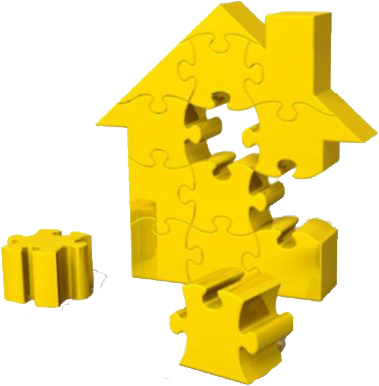As the UK moves towards becoming more environmentally responsible, one measure topping the list is the energy efficiency of living and working spaces. In addition to building comfortable homes and offices to live and work in, there’s also a focus on reducing property energy consumption. Energy efficiency is not only better for the environment, it reduces energy bills and can give a property a higher, more attractive market value.
A home or commercial space is assessed and ranked on an energy efficiency scale and given an Energy Performance Certificate (EPC). An EPC rating is given between A (highest) and G (lowest). A building’s insulation has a significant impact on the EPC rating. With the correct type of thermal insulation in place, you can boost your existing EPC rating and save more on energy bills.
Whether for domestic or commercial EPC, Gio Property Solutions is the go-to service for energy consumption assessment. Our EPC experts will help you understand the types of insulation used in homes and offices, implement changes and improve EPC ratings.
This blog focuses on the different insulation types and their impact on EPC ratings.
How Does Insulation Impact EPC Ratings?
The importance of a property’s EPC rating is no longer seen as a mere box-ticking exercise. Property developers, owners, and landlords are seeking ways to boost these ratings. Insulation is one way to increase a property’s energy performance and efficiency.
Insulation is a material used to reduce heat transfer and loss. It helps maintain a comfortable indoor temperature when the heating is on, which reduces heating bills and in turn, helps a property achieve a better EPC rating.
Without the right insulation, heat escapes from a property, which means more energy is consumed to heat a space, resulting in a higher energy bill. This is how your property’s insulation and your EPC ratings are correlated.
Depending on the type of insulation in your home or office, you can boost your ratings on the EPC scale from 5 to 20 points. At Gio Property Solutions, we’re all about helping our customers save more on their energy bills through thorough assessments and checks. Contact us to learn more about our services.
What Are the Different Types of Insulation Used in Homes?
Before you begin making changes to improve your EPC ratings, it’s useful to understand the different types of insulation available. The five main types of insulation are loft, solid wall, cavity wall, flat roof, and floor.
1. Loft Insulation
While you may know the importance of loft insulation, you may not be aware of the different types of loft insulation material available or the required standard thickness. For example, per current regulations, mineral wool insulation must be at least 270 mm or 2.7 cm thick.
Alternatively, glass or renewable wood fibre works well as a type of loft insulation material to prevent heat from escaping. Effective loft insulation can cut heat loss by up to 25 per cent and save you money on heating bills.
2. Solid Wall Insulation
Solid walls in your home or office need to be insulated with the right type of thermal insulation material, such as blown fibreglass, polystyrene beads, mineral wool or polyurethane foam.
Upgrading your solid wall insulation usually takes a day, with the process involving drilling holes in the exterior wall and then cementing them.
3. Cavity Wall Insulation
Unlike solid wall insulation, cavity wall insulation depends on the thickness of the cavity. Insulating cavity walls are equally important as insulating solid walls as they trap heat and prevent cold from entering, resulting in a more energy-efficient space.
4. Floor Insulation
Next on the list of insulation priorities is insulating a property’s floors. Residential properties typically have solid concrete oversite floors, beam and block floors, or suspended timber floors.
With concrete floors and beam and block floors, insulation is typically laid over the floor and covered with a screed. A type of rigid insulation material of about 180 mm thickness is required.
Of the different types of rigid insulation materials used for suspended timber floors, rigid foam of 90 mm thickness is preferred. Alternatively, 150 mm of mineral wool can also be used to insulate the floorboards.
5. Flat Roof Insulation
Insulation for flat roofs is of three types, namely warm deck or warm roof, cold deck or cold roof, and inverted roof.
A warm roof or warm deck has insulation above the roof deck, whereas a cold deck or cold roof has insulation below the roof deck and the associated joists. A gap should be left for ventilation in cold roof insulation to avoid condensation rotting the roof.
In both warm and cold deck designs, the weather membrane made up of bitumen and roofing felt, forms the topmost layer to protect the property from rain.
In an inverted roof, the insulation is placed above the weather membrane that protects the roof from cold and heat. The topmost layer of the inverted roof is gravel or a similar material.
Regardless of the type of structure that needs insulation, retrofitting is always an option. Our experts at Gio Property Solutions can help your property achieve better insulation. Our recommendations and retrofitting services can help you save on energy costs and influence your EPC ratings.
Contact us today for an assessment.
For Expert Assistance in Understanding Types of Thermal Insulation, Contact Gio Property Solutions
Insulation is the best solution to boost your EPC rating. With our streamlined processes, Mark from Gio Property Solutions ensures a timely check with a detailed list of recommendations to improve your home or office’s EPC ratings.
We also offer bespoke services in air tightness tests and EPC renewals for commercial and residential properties. You can bank on our expertise for all your energy needs.
Contact us today to learn more about our services.


